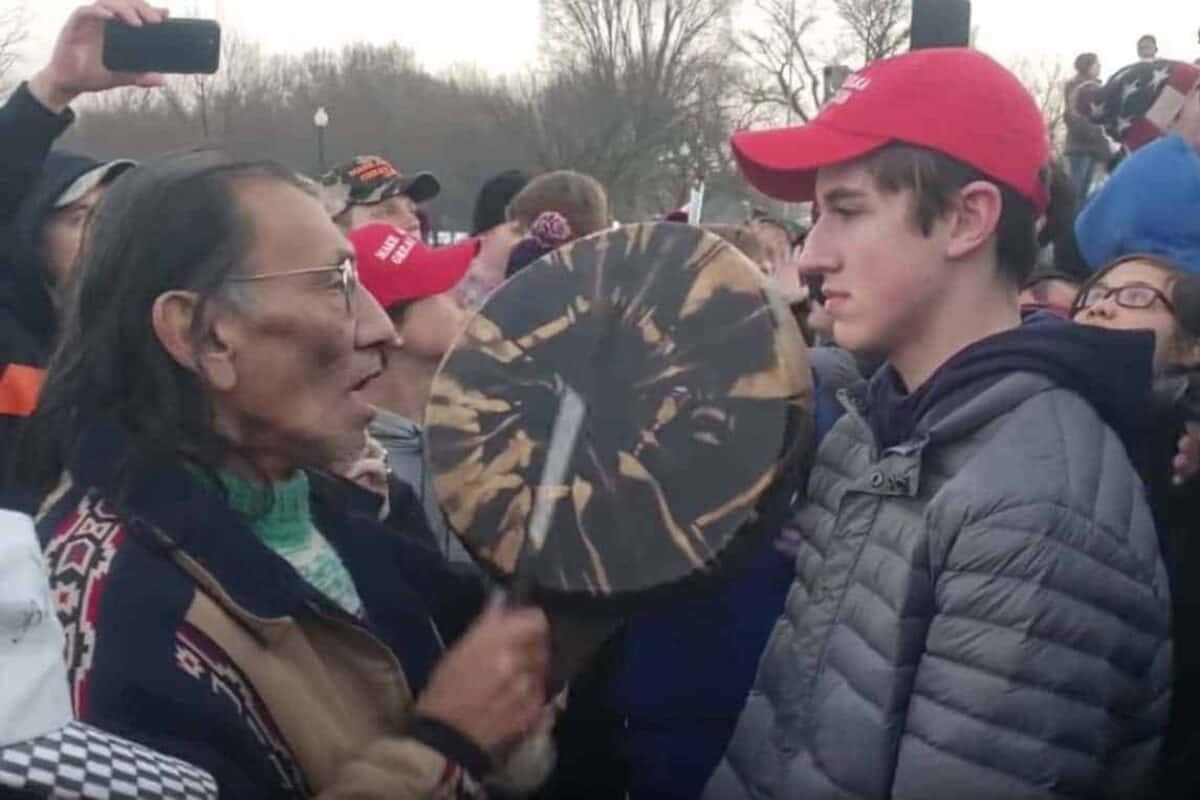First the anti-Trump contingency howled. Images of young white males in Make America Great Again hats asserting their superiority and dominance over an elderly native American veteran flooded social media feeds. Outrage instantly ensued. Media outlets jumped on the story. Talking heads opined on the outrageous behavior of the racist males in the images. The smirking boy at the heart of the image was scorned across every digital platform. Influencers tweeted furiously about the racist, disrespectful behavior of these overprivileged, white boys.
48 hours later Trump supporters howled. The family of the young male at the center of the now infamous image hired a public relations firm. Longer videos emerged showing that the situation was greyer than it first appeared. These videos showed a group of African American men who identify with the Hebrew Israelites shouting and taunting the young white males in the MAGA hats. The elderly, native American had in fact voluntarily walked into this conflict beating his peace drum. Outrage instantly ensued. Media outlets ran new stories. Talking heads opined on the calm, dignified behavior of the Christian boys from Kentucky. The boy wasn’t smirking, he was smiling! Influencers tweeted furiously about the boys who were unfairly targeted by the left and under attack by the liberal media – all for being Christian, white males wearing MAGA hats.
This confrontation and the ensuing fiery debate it prompted is one of the best and most recent examples of how this country is no longer just mired in partisan politics but has sunk into full on tribalism. It should be noted that the best example prior to this was the Brett Kavanaugh hearings in which the parallels between the white, male, catholic right tribe versus the left, liberal tribe are eerie.
Tribes demand loyalty. In return they give belonging and identity. They don’t encourage or even require thought. Politicians who think for themselves and break with their parties are no longer mavericks. They are traitors. People who share what you don’t want to see on social media are unfriended and unfollowed. Erased from your digital life.
There is no question President Trump has inflamed tribalism in America. But he is not solely to blame. Social media, cable news and how Americans choose to get their information has also escalated tribalism to levels arguably unseen in modern American history. It is much easier to stay in your tribe, hurling outrage, indignation and insults, from your twitter handle and Facebook page than it is to do the same face-to-face over coffee at the general store. That righteous indignation is only stoked further when you limit your media consumption to MSNBC and friends on Facebook that share liberal memes or to Fox and right-wing influencers on twitter.
This is all encapsulated perfectly in the confrontation at the Lincoln Memorial. People see what they want to see. They either see a group of young, white, MAGA hat wearing racist, overprivileged and disrespectful males dominating a poor, helpless Native American or they see a group of young, white boys from Kentucky who have been unfairly targeted by the left-wing media because they are wearing MAGA hats and attending a Right to Life March. When you are protecting your tribe, the actual facts don’t matter as much. What matters is protecting your tribe. One thing is for sure, whichever way people see it, they likely respond by flaming the debate through sharing their outrage on social media. The media, in their desperate stampede not to miss a story (and its corresponding clicks) that is already being shared thousands of times on social platforms immediately pushes out a story with “facts.” And the cycle continues.
Is this tribalism bad for our democracy, our society and the very future of our country? Absolutely. When you see a new story, a meme, a video on cable news or your social feed, rather than making snap judgements and disseminating further outrage on social media, people should step back. Think. Are they being purposefully manipulated? People should listen to the other side, regardless of how much they may disagree. Listening to another person’s point of view – ideally a person from another tribe – and responding thoughtfully and respectfully is likely one of the only ways out of this mess.
As a public relations professional a big part of my job is helping people tell their story. If you have a story to tell there are a few additional takeaways from watching this public relations fiasco unfold. First, in today’s media landscape speed is paramount. Snap judgements are quickly made in this tribal environment. Quickly pushing out your side of the story is more important than ever before to controlling the narrative. Gone are the days of establishing and telling your story through a press release. The best way to push your story out is undoubtedly through social media. Social media not only gives you reach but it also has the ability to set the tone and the content for traditional media outlets. This new media world has also increased the importance of influencers and pundits. Networking with those pundits is key to establishing and controlling the narrative of your story. And finally, take a page from the young kid’s family at the heart of this confrontation – if you find yourself in a crisis communications situation, hire a PR firm. I just happen to know a good one. ????


